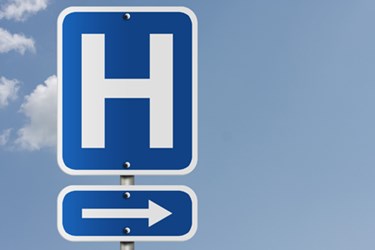HHS Fines Hospitals With Highest Infection Rates

By Christine Kern, contributing writer

Hospital-acquired conditions mean Medicare penalties for 700-plus hospitals.
Hospital-acquired conditions dropped 17 percent from 2010-2013 – resulting in $12 billion in savings and an estimated 50,000 fewer deaths according to the Department of Health and Human Services. However, those efforts were not enough for more than 700 hospitals which will see their total Medicare payments reduced by 1 percent for 2015 as part of the new Hospital-Acquired Condition Reduction Program, writes Modern Healthcare.
The demonstrated drop in Hospital-Acquired Conditions (HACs) is significant, but it is an improvement U.S. Health and Human Services Secretary Sylvia Burwell called “a big deal, but it’s only a start.” Even with the reduction, one in eight hospital admissions in 2013 included a patient injury, according to the report from the federal Agency for Healthcare Research and Quality, or AHRQ.
The combination of public reporting and penalties were created under Obamacare and designed to reduce harm to patients during hospital stays. Conditions designated under the healthcare law mandate include infections from catheters, blood clots, bed sores, and other avoidable complications.
Now, Medicare is reducing payments to 721 hospitals by 1 percent for having high rates of infections, according to Kaiser Health News, in an effort to reduce hospital-induced conditions even further. One out of every seven hospitals across the country will be hit with these reductions. The penalties will total an estimated $373 million.
Penalties were levied against some of the biggest names in hospitals across the country, including the Cleveland Clinic, Brigham and Women’s Hospital in Boston, the Hospital of the University of Pennsylvania in Philadelphia, and Geisinger Medical Center in Danville, PA. Other cited hospitals include New Jersey’s Hackensack University Medical Center, St. Mary’s Hospital in Passaic, and Bergen Regional Medical Center in Paramus.
Ten separate states had a third or more hospitals penalized, hitting teaching hospitals particularly hard, according to NorthJersey.com. Hospital errors cost Americans an estimated $17 billion annually, contributing to the deaths of over 180,000 Medicare patients alone. Medicaid also is one of the largest sources of hospital revenue, so even a 1 percent reduction (in the form of the penalties) represents substantial financial challenges for hospitals.
The HAC program requires that hospitals be scored across two measurement domains: a composite patient-safety measure (35 percent) developed by the Agency for Healthcare Research and Quality, with eight indicators such as postoperative hip fracture rate and accidental puncture rate; and a set of two hospital-acquired infection measures (65 percent) complied from data reported to the National Healthcare Safety Network, the Centers for Disease Control and Prevention's online infection reporting system.
Although the 17 percent drop on HACs was touted as solid progress, the HHS report concluded, ““There is still much more work to be done, even with the 17 percent decline ... we have measured for the Partnership for Patients since 2010. The 2013 HAC rate of 121 HACs per 1,000 discharges means that almost 10 percent of hospitalized patients experienced one or more of the HACs we measured. That rate is still too high.”
